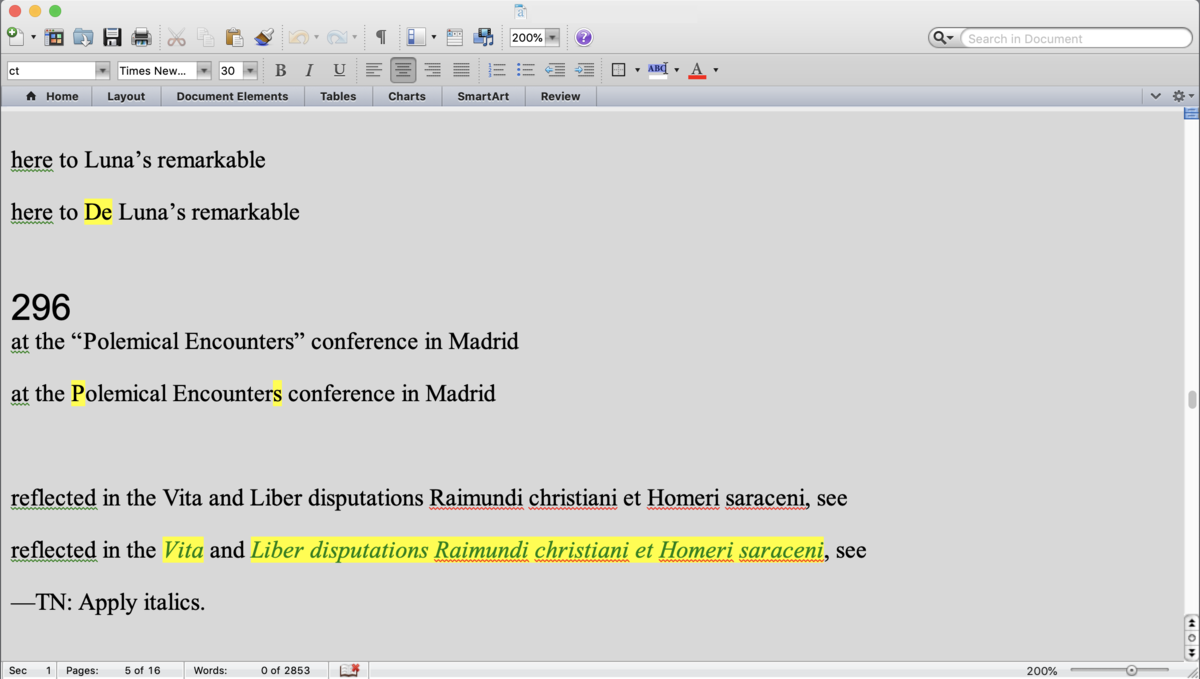Published
Adobe recently developed a method that allows you to import comments from a PDF directly into InDesign. Theoretically, this can lead to a more efficient input for proofreading alterations and corrections. Scribe has yet to fully test this new feature, so we have not determined how helpful it will be for the proofreading process. However, as with any other new development, it does lead us to consider better practices. Due to the topic of our last newsletter, challenges from our clients, and a desire to continuously improve, we have been giving a lot of consideration to our proofreading method.
When Scribe embarked on copyediting and proofreading services, I knew very little about either. Everyone on our staff collaborated to develop solid processes, but it was also important for us to establish a method to measure quality and gauge performance. So after defining tasks and establishing benchmarks, we began to perform assessments. An early mistake was to judge the quality of our copyediting based on the number of proofreading alterations (notice the terminology). This proved to be a poor gauge, because we discovered that proofreaders were frequently doing too much; they would counter the decisions of the original copyeditor or, worse, override the voice of the author. Essentially, their work seemed like a second copyedit.
Obviously, the purpose of proofreading is to catch errors, be they typos, grammatically incorrect wording, deviations from style, or others. But proofreading must be performed in a judicious manner, with consideration to prior editorial choices.
So it became imperative to improve the communication between the proofreader and the editor and project manager (usually this is the same person). In addition to supplying our clients’ requirements and stylesheets, we established launch meetings with the proofreader,1 editor, and project manager for each project. The proofreader would learn the project’s specific requirements, idiosyncrasies, and editorial choices. This has resulted in a significant reduction in the alterations reported by proofreaders as well as overall project time.
Despite the fact that this moved us closer to catching only legitimate errors, proofreaders still listed “corrections” that the editors had overruled (stetted). And like any human, proofreaders also make errors. Thus we needed an efficient method to have the proofreader report suggested changes that could be reviewed quickly by the copyeditor and then transmitted to the typesetter for entry. The normative method of marking a PDF was cumbersome, so we devised a method whereby we produce a text file listing the page number, error string, and correction string or comment. Our editor can review changes and confirm (by leaving), adjust, or remove. The reviewed and approved report is then transmitted to the typesetter.

Using our corrections report, the typesetter searches for the error string and can most often paste the alteration string directly into InDesign. The typesetter moves from one correction to the next, indicating completion on each. This is a quick method to apply changes and helps avoid missed corrections. So far, this is the most efficient method that we have been able to devise.
It has other advantages as well: It makes it easy to paste into an email if the suggested change needs to be confirmed by an outsider (usually the author). It allows us to log alterations in our records (especially important for complex projects and for the occasional project with two streams—e.g., simultaneous English and Spanish publications). It allows for the editor to verify that the corrections were properly applied (and that no errors were introduced).2 And since the copyeditor who did the original work sees what was caught, it gives her an opportunity to review her work.
So far, our method involves the following:
- Doing our best to catch everything at the copyediting stage and reduce the level of alterations in proofreading and typesetting
- Coordinating the work of the proofreader with that of the copyeditor and author
- Reporting alterations in an efficient manner
- Having the original copyeditor review the report
- Transmitting that report to the typesetter
Our method is available on the documentation section of our website. Of course, many of you are grappling with the same issues and have come up with ways to make this process more efficient. If you have suggestions or questions, please share them with me.
1. Our proofreaders, like our copyeditors, are all full-time, in-house employees.
2. Verifying alterations is particularly difficult using PDF, especially if the number of alterations is high.